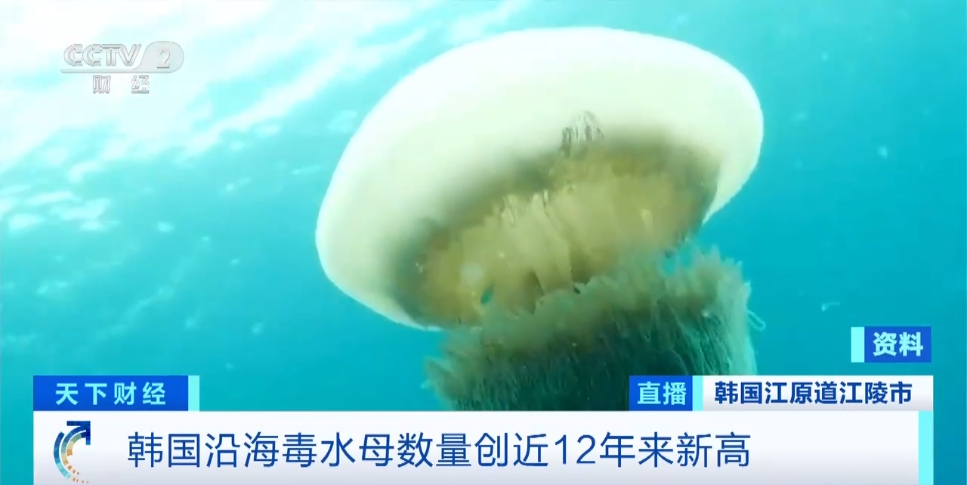This year, the number of poisonous jellyfish surged in many South Korean waters, tourists to the seaside summer play water is often stung, coastal cities fishing also face losses.
Gangwon Province Gangneung, on South Korea’s east coast, is not only famous for its bathing beaches, but also for its rich fisheries. With the onset of heat, many tourists here to play water cooling, but there are tourists worried about jellyfish sting after the water. A total of 500 jellyfish stings have been reported in Gangwon Province in the past two months, with the most in Jiangling, according to the latest statistics released Monday.

Compared with the common jellyfish, the jellyfish that haunt the east coast are 1-2 meters long and highly toxic. After being stung, tourists may experience skin redness, swelling, tingling and even coma in severe cases. On the one hand, the rise of seawater temperature and the increase of jellyfish growth rate are the main reasons for the surge of jellyfish. On the other hand, because of environmental pollution, the disappearance of natural enemies is one of the reasons. Along the east coast, the jellyfish are spreading rapidly across South Korea. According to a recent survey by the National Academy of Fisheries, there are an average of 108 poisonous jellyfish per hectare off the coast of South Korea, up more than 100-fold from last year and the highest since records began in 2012.

The abundance of poisonous jellyfish has brought losses to coastal cities’ fisheries. Because of the size of the jellyfish, fishing nets often break up due to excess weight. Some fishermen said that less than 10 percent of the fish caught each time they went out to sea. Others were poisonous jellyfish and could not work properly in the fishing industry. Some fishermen even gave up going out to sea.
At the end of last month, for example, more than 1.06 million tourists visited 86 bathing beaches in Gangwon Province, South Korea, a drop of about 10 percent from last year, the presence of poisonous jellyfish may be one of the reasons for the decline in summer water tourists. Along much of the east coast, jellyfish are being kept out of harm’s way by netting and cleaning up by water crews, but the problem is still difficult because of the number of jellyfish.